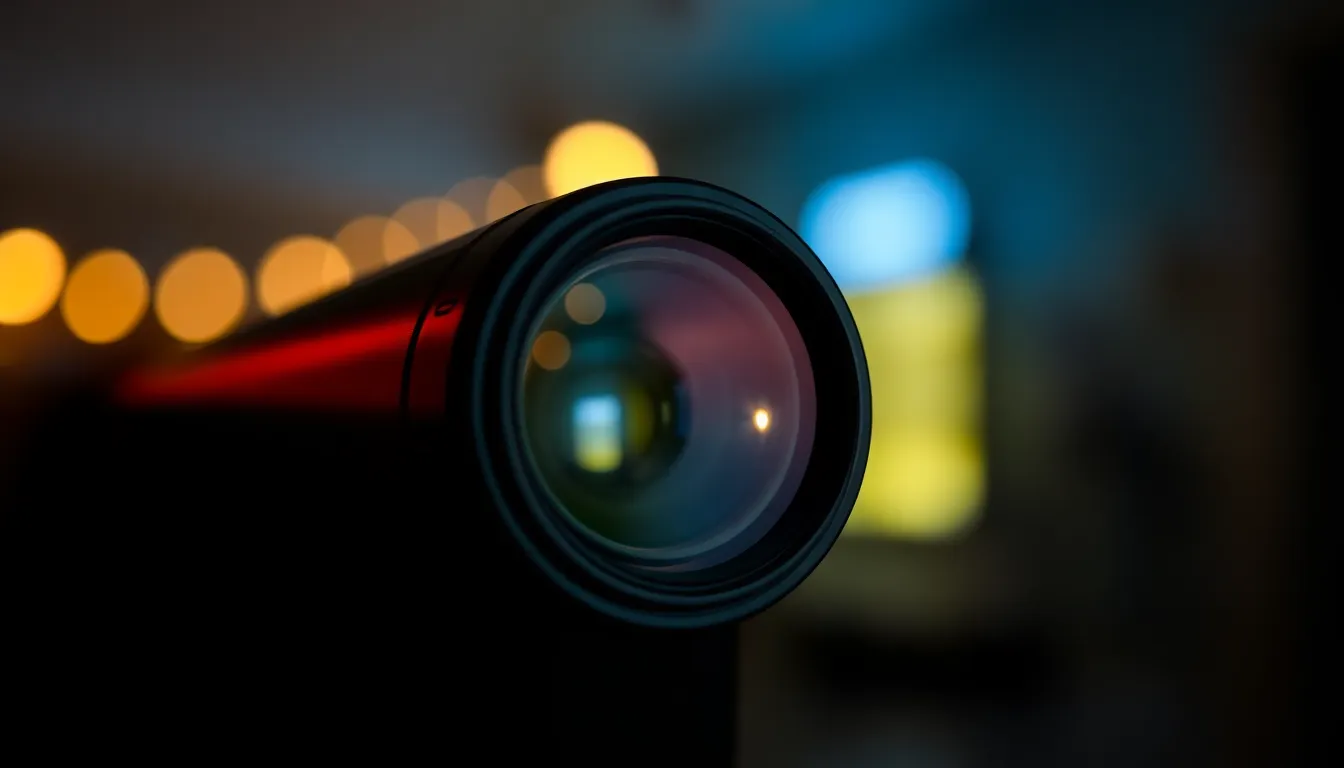Table of Contents
ToggleEver snapped a picture on your iPhone only to be greeted by a grainy masterpiece that looks like it was taken in the dark ages? You’re not alone. Many iPhone users find themselves scratching their heads over why their photos resemble a scene from a low-budget horror film.
Grainy images can be frustrating, especially when you’re trying to capture that perfect moment. It’s like your iPhone decided to throw a surprise filter on your photo without your permission. But fear not! Understanding the reasons behind those pesky grainy pictures can help you take back control of your photography game. So grab your iPhone and let’s dive into the world of pixels, lighting, and settings to uncover the truth behind those less-than-stellar snaps.
Understanding Grainy iPhone Pictures
Grainy iPhone pictures often result from inadequate lighting conditions. Low light environments strain camera sensors, leading to noise, which manifests as graininess. Increasing the ISO setting can help, but it might also introduce more noise, especially in darker settings.
Camera settings play a crucial role in image quality. Choosing lower resolution can reduce file size but may impact clarity, resulting in a grainy appearance. Ensuring that the resolution is set to high helps maintain detail in photos.
Lens cleanliness also affects image quality. Dirt, smudges, or fingerprints on the camera lens can distort images, contributing to graininess. Regularly cleaning the lens can enhance photo clarity, making images appear sharper.
Exposure time affects graininess, too. Short exposure times might lead to less light entering the camera, while long exposure times can lead to motion blur. Adjusting exposure settings appropriately ensures the sensor captures adequate light.
Post-processing can further influence graininess. Editing software often has noise reduction features that help improve image clarity. Utilizing these tools can significantly enhance the quality of previously grainy images.
Understanding each of these factors enables users to take better photos with their iPhones. Addressing lighting, adjusting settings, maintaining lens cleanliness, managing exposure, and utilizing editing tools lead to clearer, more vibrant images.
Common Causes of Graininess

Graininess in iPhone pictures often stems from various factors. Understanding these causes helps users capture clearer images.
Low Light Conditions
Low light conditions significantly affect photo quality. When natural light is insufficient, the camera sensor works harder, leading to increased noise. Nighttime photography commonly results in graininess. Consider using night mode for improved results. Night mode reduces exposure time, enhancing clarity while minimizing noise. Users can also employ external lighting sources to brighten their environment, ensuring more vibrant pictures.
Camera Settings
Camera settings play a crucial role in image clarity. Lower resolution settings decrease file sizes but negatively impact photo detail. Adjusting ISO settings can help, yet higher ISO values may introduce noise in darker conditions. Experimenting with shutter speed provides additional options; faster shutter speeds capture less light, contributing to graininess. Ensuring optimal settings during various lighting conditions enhances overall photo quality. Regularly resetting camera preferences can prevent unwanted adjustments that lead to grainy images.
Software Issues
Software issues may also contribute to grainy images. Outdated iOS or camera app versions can hinder performance. Keeping the software updated ensures access to the latest features and improvements. Occasionally, app glitches can lead to inconsistent image quality. Restarting the iPhone often resolves temporary software problems that affect photos. Users should also consider third-party camera apps for more advanced settings, providing better control over image capture.
Tips to Improve Picture Quality
Improving picture quality on an iPhone requires attention to settings, lighting, and lens cleanliness. Users can elevate their photography results by addressing these key areas.
Adjusting Settings
Change camera settings to optimize image quality. Lowering the ISO setting can help minimize noise in bright or well-lit environments. Increasing ISO may be necessary in low-light situations, but it’s important not to exceed the camera’s limit. Reducing the resolution can also enhance clarity, especially in well-lit areas. Taking control of the shutter speed allows photographers to manage exposure effectively. Experimenting with different settings often leads to the best results.
Using Proper Lighting
Utilizing natural light improves photo quality significantly. Bright environments make the camera’s job easier, reducing graininess while enhancing details. Outdoor settings generally provide the best light, especially during the golden hour. Indoor photography benefits from soft, diffused lighting rather than harsh fluorescent bulbs. When shooting at night, activating night mode and using available light sources helps capture clearer images. Prioritizing light sources when framing a shot can lead to noticeable improvements.
Cleaning the Lens
Regularly cleaning the camera lens is essential for clear images. Dust, fingerprints, and smudges can distort photos and contribute to graininess. Using a microfiber cloth effectively removes these obstructions without scratching the lens. Inspecting the lens before taking pictures ensures maximum clarity. Maintaining clean lenses is a simple yet impactful step toward enhancing photo quality. This small habit can prevent common pitfalls and ultimately result in better images.
Grainy iPhone pictures can be frustrating but understanding the underlying causes is the first step toward improvement. By focusing on lighting conditions camera settings and lens cleanliness users can significantly enhance their photography experience. Utilizing night mode adjusting ISO and experimenting with shutter speed are effective ways to combat graininess. Regular maintenance of the camera lens and keeping software updated also play vital roles in achieving clearer images. With these strategies in mind anyone can elevate their iPhone photography and capture moments with clarity and vibrancy.




